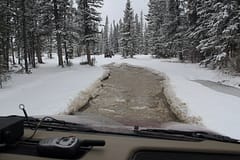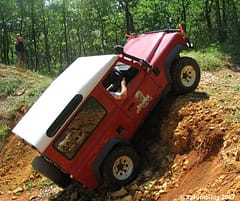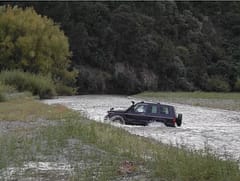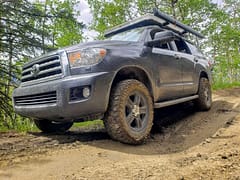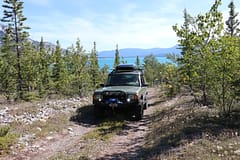Common Mistakes to Avoid on a 4x4 Beach Trip
Better navigate sandy conditions and have a more enjoyable and safer sand-driving experience.
Contents
Introduction
Driving on sandy terrain presents unique challenges, whether you’re cruising along a tropical beach, navigating rolling sand hills, or tackling desert sand. Here’s how to avoid common pitfalls and ensure a smoother, safer beach trip.

Tire Pressure
One of the most crucial factors in driving on sand is tire pressure. Lowering your tire pressure increases the tire’s footprint, improving traction and reducing the risk of getting stuck. Aim for around 15-16 psi for most sand conditions. If you get bogged down, consider reducing the pressure further, but never below 6 psi to avoid unseating the tire from the rim. Always re-inflate your tires once you’re back on hard surfaces.
Tip: Use a tire gauge for accuracy.
Recovery Techniques
Getting stuck in sand is a common issue, but knowing how to recover effectively can save you a lot of hassle.
- Initial Approach: If you start to get stuck, stop spinning the wheels immediately as this will dig you in deeper. Engage reverse gently to retrace your tracks and attempt to drive out. If you have a second vehicle, use a snatch strap for a gentle pull, ensuring both vehicles are on stable ground.
- Digging Out: If you’re severely bogged down, clear sand from around the tires and consider using sand ladders or airbag lifts to gain traction. Always carry essential recovery gear like shovels, gloves, and a pump for tire re-inflation.
- Winching: If winching is necessary, ensure the anchor point is stable. This method requires proper technique to avoid damaging either vehicle.
Tip: Always stay hydrated and wear gloves to prevent blisters from shoveling sand.
Terrain Navigation
Understanding and adapting to the sand’s surface is key to avoiding trouble.
- Surface Conditions: Sand can range from firm to soft. Always survey the area on foot if you’re unsure. When driving, maintain a steady momentum to avoid getting bogged down. Sharp turns can cause wheel spin and bogging, so make wide, gradual turns.
- Dunes: Ascending or descending sand dunes requires controlled momentum. For ascents, if you fail, back down the same path and try again with more speed. For descents, avoid braking and maintain a steady speed to prevent skidding.
- Avoid Vegetation: Always steer clear of natural or planted vegetation to prevent environmental damage and erosion.
Tip: Use previous tire tracks for a firmer driving surface and always check the conditions before attempting steep dunes.
Additional Tips
- Avoid Salt Water: Saltwater can damage your vehicle’s components and cause rust. Stay clear of driving through the water.
- Stopping on Sand: Try to stop on a slight downgrade rather than uphill to make restarting easier. If stopping, coast to a halt rather than using brakes to prevent sand buildup in front of the tires.
- Vehicle Maintenance: After a beach trip, thoroughly wash the vehicle to minimize long-term damage from salt and sand deposits.
- Watch instructional videos and practice these techniques: To improve your skills and safety on sandy terrain.
All material here is summarized from the following training material How to Drive on Sand Without Getting Stuck.
These are tips and information, you are responsible for your own decisions. Safe travels!
